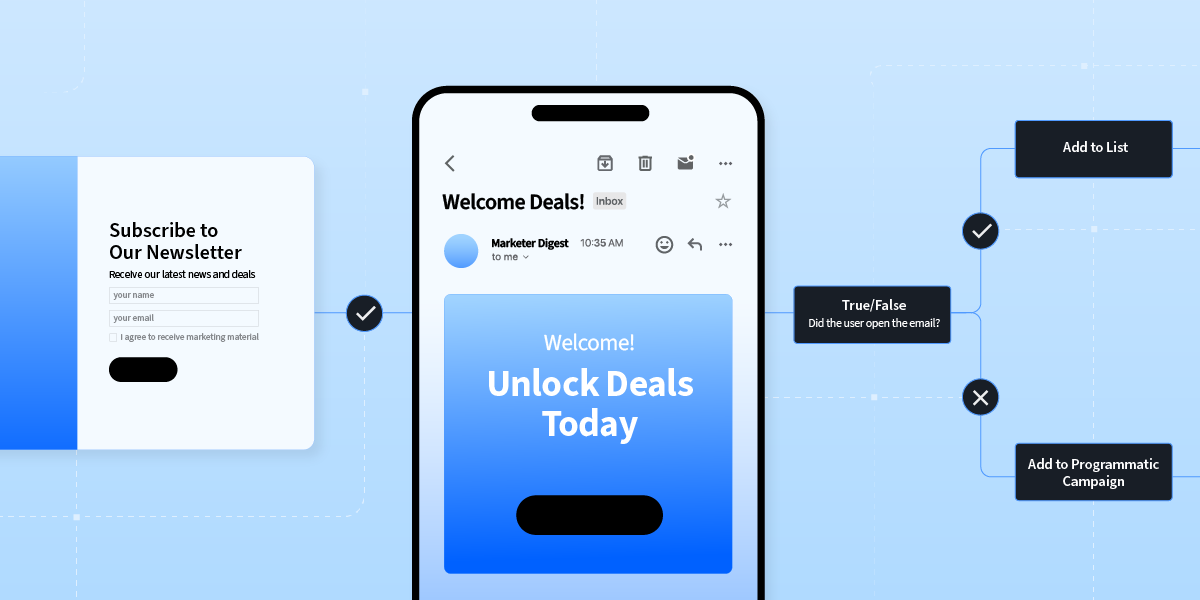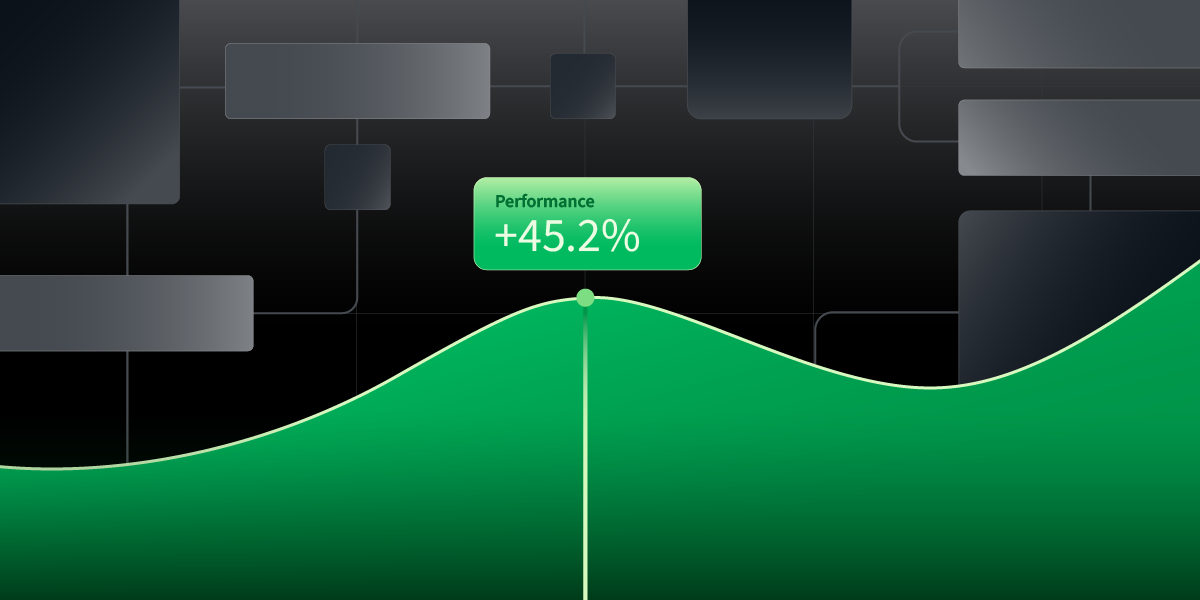Dynamic Creative Optimization: What Is DCO and How It Works

Every day, the average person encounters thousands of ads, each desperately fighting for their attention.
Many are irrelevant and filled with generic messages that fail to resonate, resulting in increased ad fatigue and diminishing returns on ad spend.
At the same time, consumers increasingly expect brands to understand their unique interests and deliver relevant, personalized experiences. Those that don’t risk being ignored—or worse, forgotten.
In response to this shift, personalization has evolved from a nice-to-have to a must-have in digital marketing. Marketing Geeks reports that enhancing personalization efforts is one of the top two priorities for marketing leaders worldwide in 2025.
Most marketers understand the benefits of personalization—from lower customer acquisition costs to increased revenue lift. However, achieving personalization at scale remains a key challenge due to limited creative resources and complex audience segmentation.
That’s where dynamic creative optimization (DCO) comes in.
Powered by AI and machine learning, DCO allows advertisers to use real-time insights and audience data to automate the creation of hundreds of ad variations, each customized to a customer’s interests and behaviours, delivered at the right time and place.
In this post, we’ll break down what DCO is, how it works, and how you can use it to deliver more personalized, performance-driven campaigns at scale.
What Is Dynamic Creative Optimization?
DCO is a type of advertising technology that allows advertisers to automatically generate multiple ad variations in real time. It adapts each ad’s creative elements and messaging based on audience data, contextual signals, and past performance to deliver more relevant, personalized ads that drive higher engagement and conversion rates.
Although DCO has existed as a marketing technology since the early 2010s, its adoption has surged in recent years thanks to AI and machine learning advancements. A 2024 study found that 82% of advertisers reported using DCO as part of their digital advertising strategy (up from 60% in 2015), and a third planned to increase their use.
How Does Dynamic Creative Optimization Work?
To fully understand the potential of DCO, it’s helpful to understand exactly how it works.

Here’s a detailed, step-by-step breakdown of the whole process from campaign setup to ad delivery:
1. Template Creation
First, advertisers design a base ad template containing dynamic placeholders. These placeholders automatically adapt elements such as product images, messaging, pricing, calls to action, and URLs, enabling the rapid creation of multiple ad variations from a single core design. Templates can also incorporate brand elements such as logos, colours, and fonts, ensuring every ad variation remains visually consistent and aligned with brand guidelines.
2. Data Collection and Product Feed Integration
Next, the platform collects critical data that powers DCO’s personalized ad delivery from two primary data sources:
- User Activity (Pixel Data): A tracking pixel on an advertiser’s website captures user interactions, including product views, items added to carts, and previous purchases. Each interaction records a unique product identifier for accurate tracking and segmentation.
- Product Feed: Advertisers provide a regularly updated feed containing detailed information about their products, including unique identifiers (like SKU numbers), images, titles, prices, product descriptions, and URLs. This feed is typically refreshed regularly to ensure the platform always has the most up-to-date data on the current available inventory.
3. Matching User Activity with Products
The platform then matches user activity captured through the pixel with corresponding product details from the product feed by using consistent, unique product identifiers.
For example, if a user views a specific product, the platform identifies this interaction through pixel data and retrieves the relevant product details from the product feed.
4. Optimization and Personalization
Leveraging the matched data, DCO delivers highly personalized ads to individual users through various optimization strategies, such as:
- Retargeting last-seen products: Showing products users recently viewed on the advertiser’s site.
- Products in cart: Reminding users about products they recently added to their cart and abandoned.
- AI-based product recommendations: Suggesting related, popular, or recommended products based on user behaviour and online browsing activities.
As each variation is served, AI continuously tests and optimizes creative combinations, gathering insights advertisers can use to refine future campaigns and improve performance.
5. Ad Assembly and Delivery
When a user sees an ad online, the DCO platform dynamically assembles and populates the creative template, delivering personalized content tailored to the individual user, all within a fraction of a second. This ensures that each ad impression is relevant, timely, and engaging, increasing the likelihood of a conversion.
Why Is Dynamic Creative Optimization Important?
With marketers facing reduced budgets and fewer resources for scaling creative production and campaign management, DCO provides many benefits to marketing and creative teams, including:
- Increased ad relevancy and performance: DCO tailors ads to each user, creating more targeted and relevant campaigns that are more likely to convert.
- Real-time optimization: Ads are dynamically adjusted in real time, freeing up marketing teams to focus more on strategic planning and other creative tasks.
- Enhanced cost efficiency: Studies show that personalized campaigns can help increase marketing ROI by 10-30%.
- Scalable creative production: Advertisers can automatically produce hundreds or thousands of personalized ad variations efficiently and cost-effectively.
- Data-driven decision-making: Rather than relying on gut intuition, DCO uses machine learning to optimize ads based on the best-performing creative variations and user engagement.
Examples of Dynamic Creative Optimization In Action
Unsurprisingly, the agencies and brands that benefit the most from DCO are in industries like retail, e-commerce, CPG, and automotive—verticals that typically manage large volumes of fluctuating inventory (in terms of pricing and stock levels) and rely on conversion-focused advertising to drive sales.
Here are some examples designed by the StackAdapt Creative Studio team and specific use cases of DCO for each of these industries:
Retail
Dynamically showing home furniture items based on user browsing behaviour, such as sofas or tables the user previously viewed alongside similar products in complementary styles and colours, to increase ad relevance and conversions.
E-commerce
Retargeting pet owners with ads showcasing recently viewed pet products, like specific dog treats or toys, along with current prices and a bold CTA to encourage shoppers to complete their purchase.
CPG
Personalizing beauty and skincare product recommendations based on previous purchases or browsing behaviour. For example, DCO can be used to highlight a specific shade of lipstick or skincare product that’s aligned with a user’s historic shopping preferences.
Automotive
Serving dynamic ads featuring car models that users previously viewed or interacted with, alongside localized pricing or dealership offers, to motivate users toward scheduling a test drive or visit to a local dealership.
The Future of Dynamic Creative Optimization
According to a recent Yahoo! Survey, 56% of marketers said that running DCO across multiple channels or formats was an important part of their strategy.
So far, DCO has mostly been limited to performance-driven channels like native and display advertising. But the landscape is shifting and will soon allow advertisers to expand into premium formats like programmatic video and connected TV—channels that were previously too costly for most brands and agencies to personalize and optimize at scale.
This evolution will also open doors for higher-consideration verticals, such as B2B, finance, and travel, allowing marketers to efficiently personalize ads promoting specific travel destinations, financial products, and services that often have a longer buyer journey than traditional retail products.
Ready to take your personalization strategy to the next level? With StackAdapt’s self-serve, AI-powered DCO, you can deliver the most relevant product recommendations to each user, driving more conversions, stronger ROI, and faster campaign launches.
Speak with our team to learn more.
Dynamic Creative Optimization FAQs
DCO has traditionally used 3rd-party cookies to track user behaviour and personalize ads. However, due to rising privacy regulations and the ongoing phase-out of 3rd-party cookies, DCO is evolving to rely more heavily on 1st-party data gathered directly from users through explicit consent to build audience segments and dynamically personalize ad creatives with even greater precision.
Further aligning with privacy-friendly advertising practices, DCO increasingly leverages contextual targeting, serving relevant ads based on webpage context and other contextual triggers rather than individual user data.
DCO and programmatic advertising work hand in hand, but they serve different functions. Programmatic refers to the automated buying and placement of digital ads. DCO, on the other hand, focuses on the creative side—automatically assembling and personalizing ad content in real time based on user data, behaviour, and contextual signals. While programmatic advertising ensures your ad reaches the right person at the right time, DCO ensures the message they see is the most relevant and compelling.






